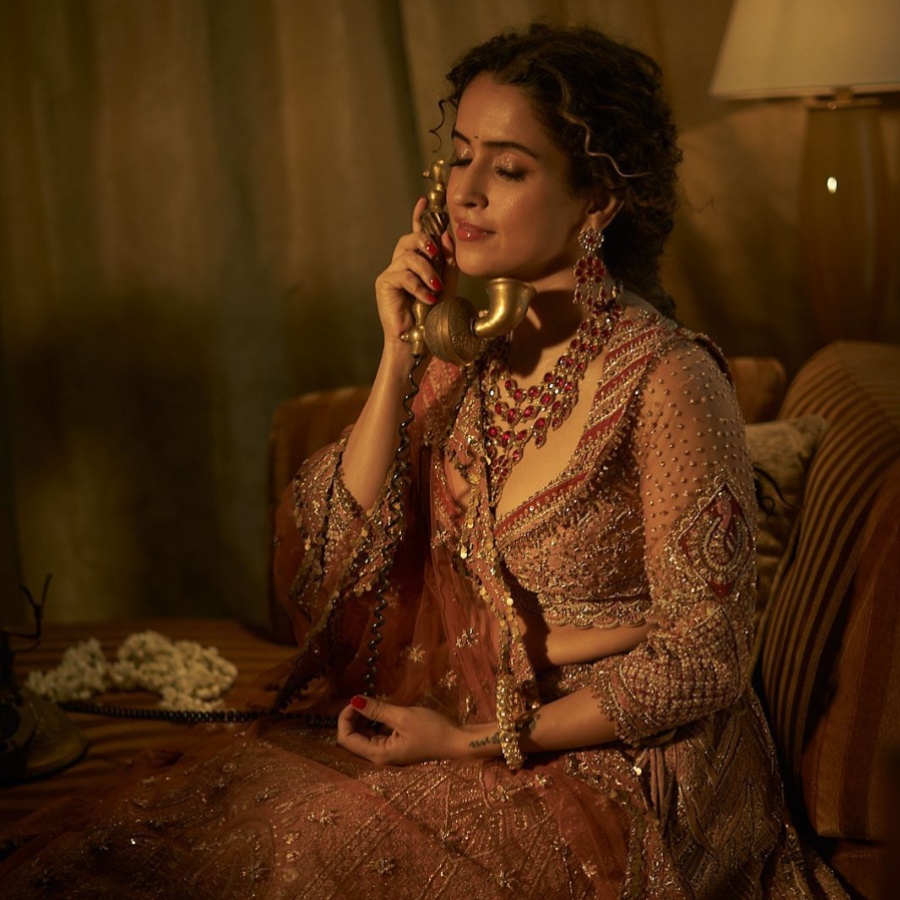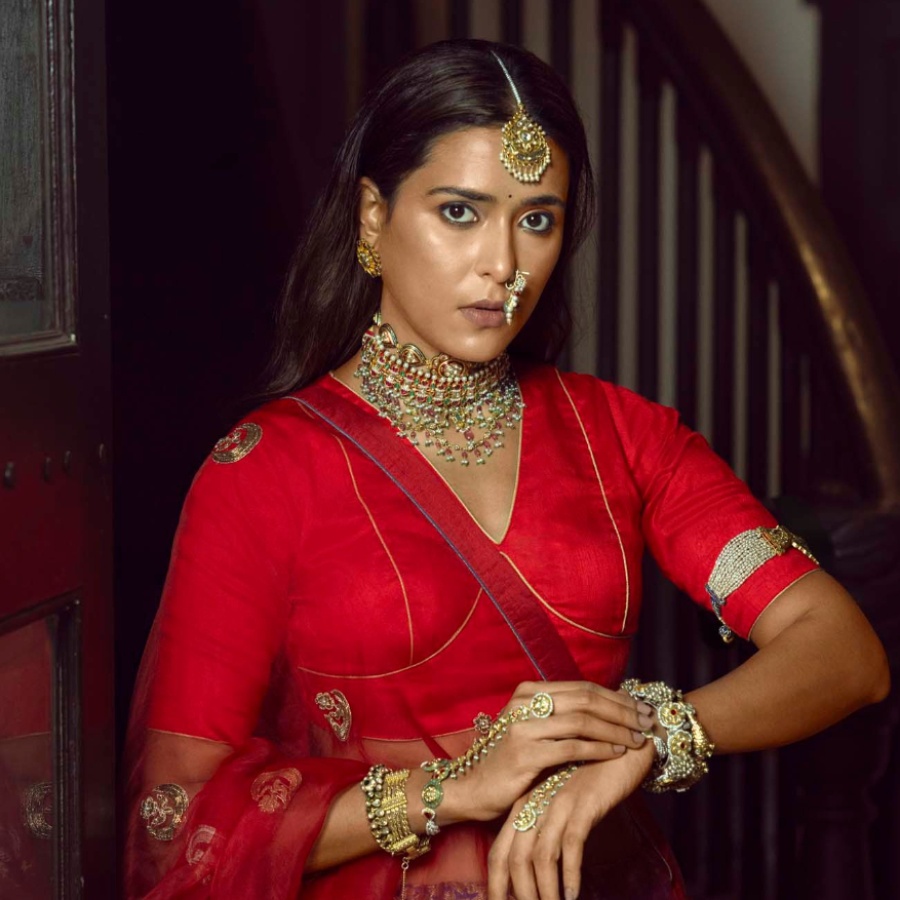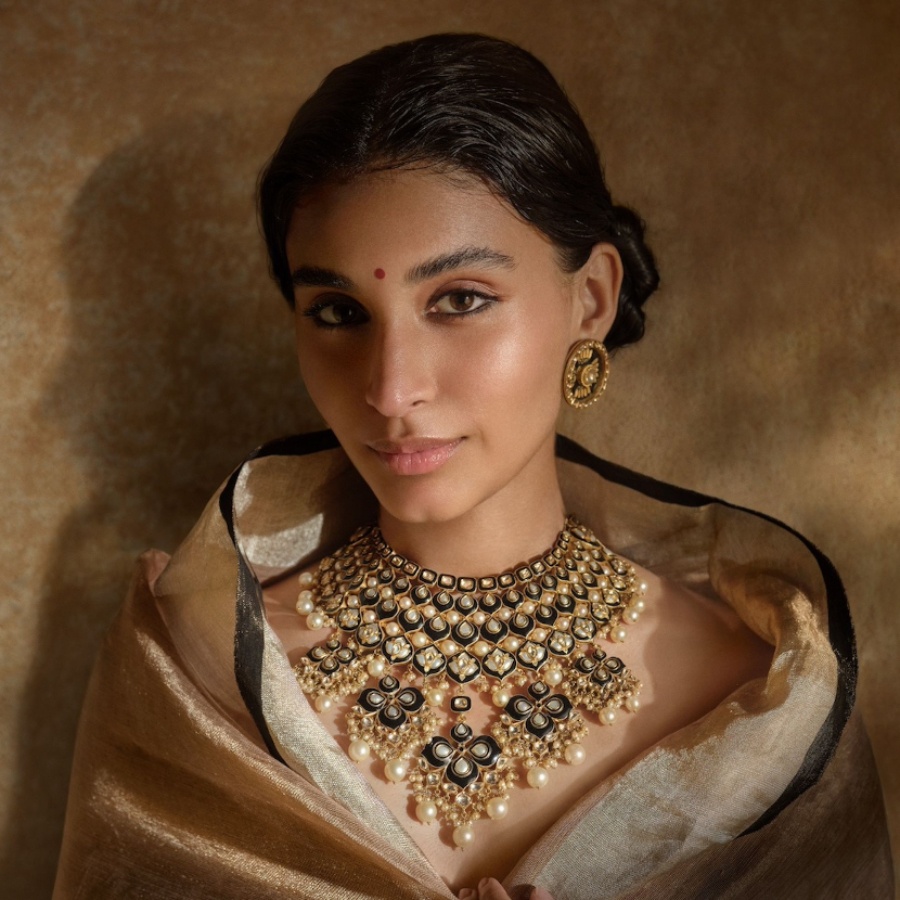For a moment, visualise the essentials of a classic Indian wedding. Abundance of flowers, painstakingly put together decor, expansive itineraries and envy-inducing couture. Now, try to picture the bride without her solah shringar. It’s nearly impossible, isn’t it? Agreeably so. After all, brides bedecked in shimmering splendour from head to toe are as essential to Indian weddings as the ceremonies themselves.
ADVERTISEMENT
In collaboration with Birdhichand Ghanshyamdas

Birdhichand Ghanshyamdas

Birdhichand Ghanshyamdas

Birdhichand Ghanshyamdas

Birdhichand Ghanshyamdas
Whether opting for minimalist pieces to complement pastel lehengas, dramatic diamonds to enhance vibrant anarkalis, or gold and gemstones for a touch of royalty, one thing remains certain: when it comes to Indian brides, jewellery is never merely an afterthought—it’s an integral expression of their style and culture.
But first, where did it all begin?
Dive into the opulent coffers of our nation’s history, and you’ll find that while many kingdoms rose and fell, their jewellery-making techniques were ingeniously adapted by Indian artisans, immortalising pivotal moments in stone and gold. Legend has it that our adoration for ornaments dates back to the Harappan civilization, where humble beads, shells, and semi-precious stones were meticulously crafted into intricate pieces. As India evolved into a land of royal dynasties, jewellery became a symbol of lineage, power and heritage.
The Mughal emperors and empresses wove Persian influences with Indian techniques, giving birth to the exquisite kundan and meenakari styles that glistened in their grand vaults. Brides then adorned themselves with multi-strand jadau necklaces, paasas, and chandbali earrings, featuring exclusive enamel work that symbolised wealth and status. Meanwhile, it was in Rajasthan, the iconic jewel paradise of India, that the Rajputanas, with their passion for setting uncut diamonds in gold, brought polki jewellery into the limelight. Rajput brides favoured striking satladas, sheeshpattis, borlas, and pachelis that showcased the richness of Rajasthani craftsmanship.
As centuries passed, the British arrived on Indian shores, bringing with them the nuance of the Victorian era, resulting in pieces that were both ornate and delicate. The crown’s influence introduced new designs and techniques in bridal jewellery, incorporating diamonds, emeralds, and pearls into distinct settings that echoed the era’s penchant for romanticism and grandeur.
The keepers of stories and sentiments
While the Indian jewellery landscape remains an ever-evolving canvas of beauty and tradition, these rich historical influences have left an indelible mark on bridal jewellery. Consider the heirlooms that become a part of your bridal trousseau—the beaded bajuband passed down from your grandmother, the polki haar your mother wore on her wedding day, the gold maangtikka gifted by your aunt—that do more than just adorn you. They encapsulate ancestral charm while also reflecting the enduring heritage of India.
Birdhichand Ghanshyamdas, with its illustrious presence, understands the profound connection between a bride and her jewellery. They honour these time-tested traditions and take this luxurious legacy—from the ancient beads of Harappa to the regal affluence of Mughal courts, the sheer brilliance of Rajput , and the inimitable grace of Victorian influence—and infuse it with a contemporary flair, making them relevant and alluring for the modern bride.
A legacy reimagined for the new-age bride
Today's brides are redefining what it means to embrace tradition. They seek jewellery that tells their unique story, pieces that are as versatile as beautiful. Birdhichand's collections celebrate this trailblazing bride—one who honours her heritage while confidently stepping into the future. Their jewellery, while being steeped in tradition, does not shy away from experimentation.
Take, for instance, their reinterpretation of the traditional polki haar. While the essence of the majestic stone remains, Birdhichand introduces several variations featuring asymmetrical patterns, unexpected gemstone combinations, and innovative settings that breathe new life into this classic piece. The result is a range of heirloom-worthy necklaces that are an ode to their royal origins while exuding a chic, contemporary vibe.

Birdhichand Ghanshyamdas

Birdhichand Ghanshyamdas

Birdhichand Ghanshyamdas

Birdhichand Ghanshyamdas
Similarly, the mathapatti and borla retain their vintage-inspired charm but receive a fashion-forward makeover. Gemstones are given an avant-garde rendition with elaborate natural diamonds, and fine filigree work adds exquisite finesse to chokers and pendant necklaces. These pieces, along with artisanally crafted kundan kadas, redefine what it means to be a nouveau Indian bride adorned in tradition.
Moreover, these jewels seamlessly pair with the bride's wedding wardrobe, blending effortlessly with both traditional and contemporary bridal ensembles. Whether worn with a timeless Banarasi saree or a subtle and sleek gown, Birdhichand's jewellery is sure to enhance and elevate the entire bridal look.
As we witness the evolution of bridal jewellery through the lens of Birdhichand, it becomes clear that their creations are more than just accessories. They pay homage to heritage, a nod to modernity, and above all, are storytellers. Masterfully creating pieces that emerge as a forever-kind-of-thing, the House of Birdhichand Ghanshyamdas ensures that every bride feels cherished, ethereal, and rooted in her wedding jewellery.
Visit Birdhichand Ghanshyamdas at The Wedding Collective for an exclusive look into their latest bridal collection.




